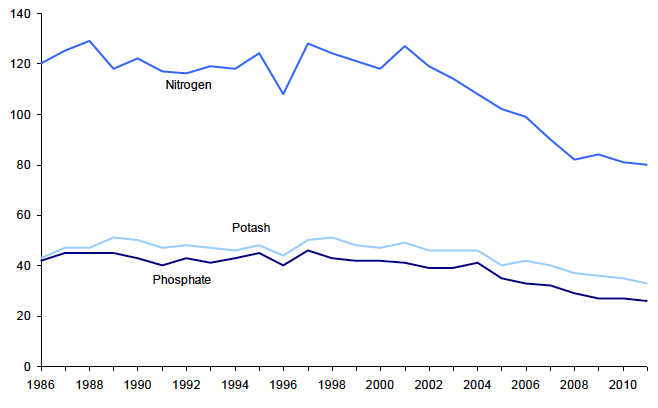Key Scottish Environment Statistics 2012
This publication aims to provide an easily accessible reference document which offers information on a wide range of environmental topics. It covers key datasets on the state of the environment in Scotland, with an emphasis on the trends over time wherever possible.
This document is part of a collection
Nutrients Applied to Crops and Grass: 1986-2011
Total nutrients applied to crops and grass (kg/ha)[13],[14],[15]

Fertilisers contain nutrients, such as nitrogen, phosphorus and potassium, which improve plant growth and crop yields. The inappropriate or mistimed use of fertilisers may cause nutrient enrichment and eutrophication of waters. Excess nitrates in drinking water are also a danger to human health. The EC Nitrates Directive (91/676/EEC) provides a framework to protect water bodies from agricultural nitrate pollution. This includes the designation of Nitrate Vulnerable Zones, where an action programme controlling fertiliser use is implemented.
Changes in overall application rate are due to changes in either the proportion of crop area treated or average rate of application, or both. Weather and economic factors may contribute to changes in fertiliser use.
Between 1986 and 2000, overall phosphate and potash application rates remained relatively stable, although both have declined in recent years. The decline is probably largely due to increased fertiliser prices. Overall nitrogen application rates have declined since 2001, reflecting a longer term reduction in application rates to grassland and a recent reduction for tillage crops. In 2011, the nitrogen application rate was 80 kg/ha, a reduction of 35% compared with 1995.
Source: Defra / Scottish Government[16] / Metadata
Contact
Email: Sandy McPhee
There is a problem
Thanks for your feedback